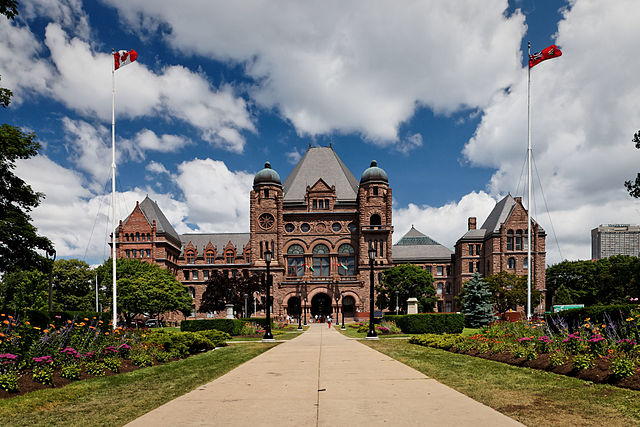
Overspending behind Ontario’s ‘chronic’ deficits, not weak economy, report says
by Canadian Manufacturing.com Staff

Fraser study says a 72 per cent spike in government spending has helped double province's debt to nearly $300 billion since 2003

Ontario has run budget deficits in 10 of the last 13 years. PHOTO: Benson Kua, via Wikimedia Commons
TORONTO—Having run deficits for 10 of the last 13 years, piling up a total debt load of just shy of $300 billion, the government of Ontario has a spending problem, according to a new Fraser Institute report.
“According to a popular narrative at Queen’s Park, Ontario’s large deficits and massive debt are unavoidable consequences of the 2008 global economic downturn and other uncontrollable economic forces. But in reality, Ontario’s years of rapid spending growth are to blame,” Ben Eisen, associate director of the Ontario Prosperity Initiative at the Fraser Institute and the study’s co-author, said.
The report points to an increase in provincial program spending of 71.6 per cent since the 2003/04 budget as one of the main drivers of the ballooning debt. Spending on everyday government operations reached $120.9 billion in 2015/16, up from $70.4 billion 13 years earlier. While some of that increase can be dismissed as a result of a growing population, the spending increase outpaced the economic growth in the province, as well as the inflation and population growth combined.
See also: Public payroll, not sluggish manufacturing sector, is the biggest drag on Ontario’s revenues: MPP
The Fraser notes that if Ontario had restrained spending increases since 2003/04 to the rate of economic growth, the government would have posted a $10.7 billion surplus for the current fiscal year, as opposed to a $7.5 billion deficit.
“If successive Ontario governments had exercised greater control of spending, provincial finances would be in much better shape today,” Charles Lammam, director of fiscal studies at the Fraser Institute and another of the study’s authors, said.
Though the report acknowledges the current Liberal government has slowed the rate of spending growth over the past few years, it says the steps have been “inadequate” in combating the province’s fiscal problems.
Ontario plans to release its 2016/17 budget next week, and has announced it will postpone the phase-in of the Ontario Retirement Pension Plan by one year. While interest rates remain at historic lows, assuaging some of the cost of borrowing, the spending and high debt load continue to take their toll.
Ahead of the new budget’s release, the Ontario Chamber of Commerce is also advocating restraint, calling for Ontario to take steps to eliminate the deficit.
“Eliminating the deficit and reducing the debt should be the government’s top priority,” Allan O’Dette, president & CEO Ontario Chamber, said. “The provincial debt is now roughly $300 billion—interest payments on that debt are consuming an ever greater portion of the provincial spend. To ensure Ontario’s future competitiveness, we need to get back to fiscal balance.”
The Ontario government continues to insist it will balance its books by 2017-2018—10 years after it last registered a small surplus.